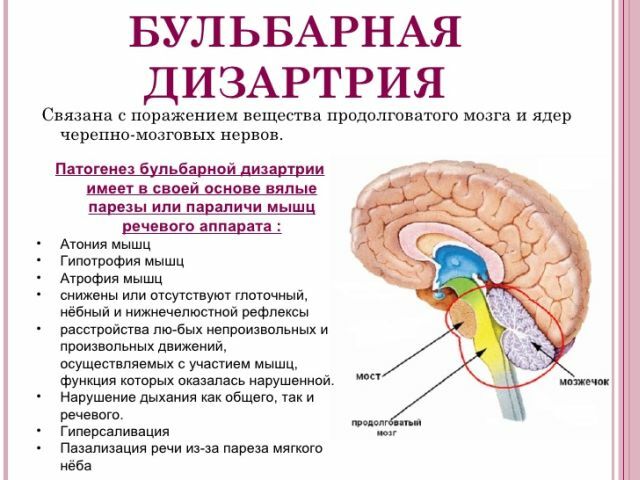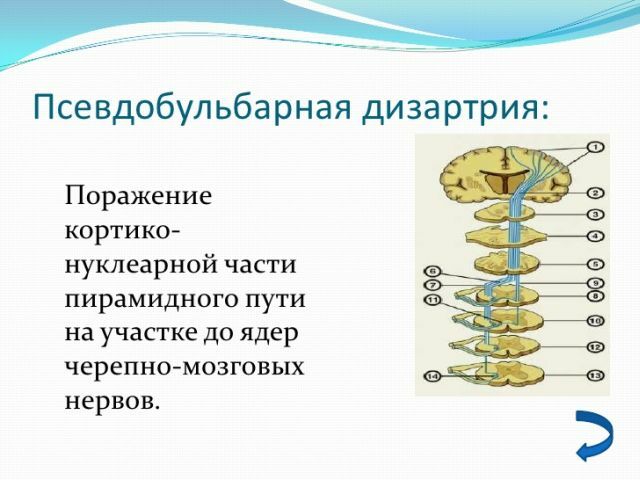 Stammering is a severe psychiatric disorder with characteristic visible signs. Violation can be found in childhood or manifest already in adulthood.
Stammering is a severe psychiatric disorder with characteristic visible signs. Violation can be found in childhood or manifest already in adulthood.
Physicians associate the development of the disease in childhood with abnormalities of nervous activity, at risk children with neurological disorders and brain diseases.
Stuttering manifests itself in violation of fluency and rhythm of speech, which is associated with the occurrence of seizures in several departments of the speech device:
- vocal cords;
- articulating;
- respiratory.
Contents
-
- Species
- Disorder Features
- Logoneurosis Features Features of the neurosis-like disorder
- Etiology and pathogenesis of the disorder
- Causes of a disorder
- Developmental phases
- Clinical picture
- Diagnosis and therapy disorders
- What can be done at home?
- Summing up
- Species
Varieties of violation of
Depending on the causes of the development and course of the disease in medicine, it is common to subdivide stuttering into such types as:
- neurotic or logoneurosis;
- is neurotic like( organic).
In its turn, neurotic stuttering happens:
- tonic - involuntary pauses in speech, extended pronunciation of words;
- cloned - repeated repetition of individual words or syllables;
- mixed - in oral speech there are symptoms of tonic and clonic neurosis.

Features of logoneurosis
A characteristic feature of logoneurosis is a clear relationship between disturbances in the rhythm of oral speech and a pronounced psychoemotional load on the child, the significance of the speech situation for him.
With neurotic stuttering in a child in a calm environment for him, the disease is almost not manifested, however, in stressful situations, as soon as the baby begins to worry, the faltering in the oral speech intensifies.
Logoneurosis in children, as a rule, manifests itself at an early age of 2 to 5 years, it is during this period that the process of active  formation of the child's speech device takes place.
formation of the child's speech device takes place.
The risk of developing the disease in a more adult age is decreasing, according to statistics, the number of cases of the disease manifestation among children in the age group from 5 to 6 years is 2%, from 6 to 14 years - 1%.
Neurological stammering is accompanied by facial tics, facial muscle tension, frequent blinking, trembling of the lips and jaw.
Features of the neurosis-like disorder
Neurosis-like stuttering is the result of residual organic changes in the brain's work caused by pathological conditions during pregnancy, childbirth or at an early age of the child.
Unlike logoneurosis, the reasons for the development of organic stuttering are hidden in the child's not psychoemotional state, but in physiology.
Characteristic signs of neurosis-like speech device disorder:
- increased speech activity, accompanied by abundant motor activity;
- tongue-tie;
- no logophobia.
Etiology and pathogenesis of
violation There is no single opinion on the etiology of stuttering to this day, but despite the difference in views on the causes of stuttering in children, the pundits are united in one - there are a number of determining factors:
- age category of the child;
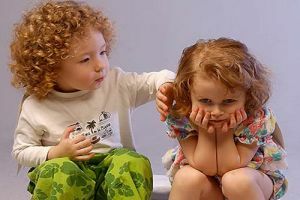
- sexual dimorphism;
- features of speech ontogeny;
- is a genetic factor;
- state of central nervous system;
- presence in the history of mental traumatism.
The greatest number of cases occurs in children aged from two to five years, during this period, there is an active development of the speech system. At the same time, in boys, the incidence rate is 4 times higher than in girls.
The pathogenesis of stuttering is associated with impaired coordination of voice, articulation and respiratory process.
Causes of violation of
Various factors can cause the development of speech disorders:
- psychological,
- physiological,
- social.
Psychological causes of stuttering: 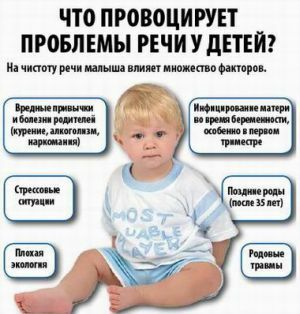
- psychoemotional shock;
- neurotic reactions;
- is a strong fright;
- feelings of resentment, jealousy, desire to attract attention;
- children's fears.
To physiological factors include:
- hereditary predisposition;
- trauma of the brain;
- damage to the nervous system as a result of birth trauma;
- disorders of the nervous central system as a result of transferred infectious diseases, rickets;
- diseases of the organs of the speech apparatus - nasopharynx, larynx.

Social factors can also provoke stuttering, for example, such as transferring from one kindergarten to another, changing residence, learning foreign languages at an extremely early age( overloading a child with speech material), excessive severity of parents.
Defects in the child's speech can be caused by imitation of a family member with a stammering.
Developmental phases
Four stages of development of stuttering in childhood have been identified:
- I-phase of : for the first phase there are small stutters in a measured smooth speech, slight stuttering, usually in the first words of sentences. The child does not react to difficulties in pronunciation, there is no fear of communication;
- II-phase : the number of periods of pauses in smooth speech increases, becomes chronic. Stuttering manifests itself in fast speech, in polysyllabic words. The child is aware of violations in oral speech, but does not relate himself to stuttering people;
- III phase : in this phase, convulsive syndrome is fixed, stammering occurs when certain sounds or words are pronounced. Logophobia is absent, however, the child tries to replace "problem" sounds and words with others;
- IV - phase : the child reacts sharply to the reaction of others to his pathology of speech, develops the fear of speaking, the child tries to avoid speech situations.
Clinical picture
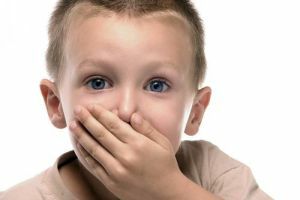 Development of speech pathology is characterized by such initial signs as uncertainty in speech, brief pauses, repetition of individual sounds and syllables, violation of smoothness.
Development of speech pathology is characterized by such initial signs as uncertainty in speech, brief pauses, repetition of individual sounds and syllables, violation of smoothness.
Often, children with stuttering go on tricks trying to replace difficultly pronounced words with easier word forms, introduce additional words into spoken speech.
As noted above, cramps in the muscles of the larynx, tongue, palate, and diaphragm lead to speech disorders. Usually, vocal cramps occur when vowels are pronounced.
There are three types of spasms of the vocal apparatus:
- seizure cramp;
- vocal;
- is guttural trembling.
Respiratory cramps are subdivided into inspiratory and expiratory ones, in the first case convulsions occur on inspiration, for the second, a sharp sudden exhalation is characteristic. Expiratory convulsions are accompanied by a powerful contraction of the abdominal muscles, a lack of air.
The clinical picture of stuttering is supplemented by nervous facial tics, grimacing, psychological discomfort, closedness, irritability, crying, sleep disturbance, in some cases, attacks of aggression.
Diagnosis and therapy violations
During diagnosis, the attending physician examines the medical history, takes into account psychopathological symptoms. The diagnosis is established on the basis of consultations of a speech therapist, a psychologist, a neurologist, after passing the neuropsychological testing.
The aim of correction of stuttering is to ease or completely eliminate convulsions of the speech apparatus, accompanying pathologies, strengthen the nervous system, influence the psychoemotional state of the stutterer, correct the behavior of the child in society.
Correction is a complex collaboration between a small patient and a specialized specialist.
There are several methods of treating childhood stuttering, each author's technique is based on the author's presentation on the causes of speech disorders.
The most well-known programs for stuttering in children are:
- Vlasov and Rau technique,
- technique Mironova,
- technique of Seliverstov.
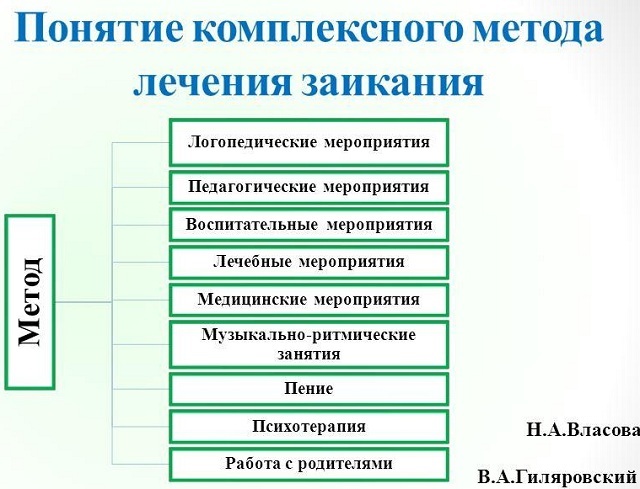
Methods of correction of speech disorders are based on a phased complication of speech exercises. The corrective program can be divided into three main stages:
- The task of the first stage of is to create a friendly environment, to demonstrate samples of correct oral speech, to acquire skills of simple situational speech, to expand the vocabulary, to get acquainted with certain subjects, their description is widely used recitation, pronunciation of learnedphrases.
- Training stage provides training of children with different forms of speech - rhythmic, conjugate-reflected, whispered. Widely used is the form of "question-and-answer" communication, games, forms of manual labor - drawing, modeling, design.
- At the final stage of the , the techniques for correcting speech defects involve the consolidation of acquired skills, the modeling of behavior in different speech situations.
When choosing the correction method, parents and specialists should take into account the personal qualities of the child.
What can I do at home?
For the treatment of stuttering at home use:
- independent speech therapy;
- breathing exercises for vocal cords and diaphragm;
- acupressure;
- use of special computer programs.
Summarizing the
Failure to take measures to get rid of the disease in a child from an early age is fraught with the development of complications, by the adolescent age the  violation can completely subordinate life activity, inhibit the development of the personality in the social environment, promote the development of complexes, and eventually lead to the transmission of stutteringthe next generation in the family.
violation can completely subordinate life activity, inhibit the development of the personality in the social environment, promote the development of complexes, and eventually lead to the transmission of stutteringthe next generation in the family.
The main measure for the prevention of the development of the disease is the avoidance of stressful situations, mental trauma. An important role in the prevention of stuttering in children lies with their parents, preventive measures include:
- family friendly;
- attentive, affectionate attitude to the child;
- compliance with the daily routine;
- Avoiding excessive loads.
When communicating with a child you need to speak in a measured, leisurely manner. To spend time with the baby, using the game form of communication, to develop fine motor skills of the hands.
If nevertheless it was not possible to avoid the disease and the child is diagnosed with stuttering, parents should not panic. It is important to turn to specialists in a timely manner, strictly follow the recommendations of doctors, provide the child with all-round help in overcoming the disease.

